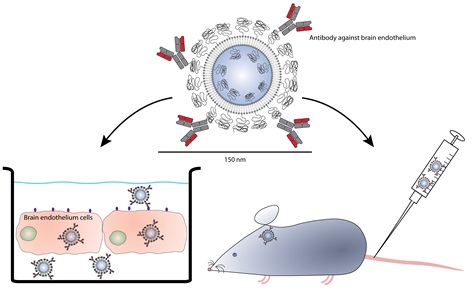The blood-brain barrier (BBB) is a highly specialised barrier system of endothelial cells that separates the blood from the underlying brain cells, providing protection to brain cells and preserving brain homeostasis (stability). The brain endothelium has a complex arrangement of tight junctions that restricts the paracellular passage of molecules. This physical barrier is further enhanced by interactions with glial processes that form endfeet and surround the brain microvessels. The BBB is permeable to small and lipophilic (fat-loving) molecules (up to 800 atomic mass units), but larger molecules are not transported across unless there is an active transport system available. An additional problem is the very effective drug efflux systems, which pump the drug back out of cells.
For many diseases of the brain, such as Alzheimer’s disease, Parkinson’s disease, stroke, despression, schizophrenia, epilepsy, etc., the current treatment may not be optimal in all cases, which to some degree may be coursed by poor permeability through the BBB. Where the BBB may be an obstacle for small molecules difficult to circumvent, this is even more pronounced for large-molecule drugs, such as recombinant proteins or gene-based medicines, with proven CNS effect, hence a suitable pharmaceutical delivery system needs to be developed in order to get these advantages within molecular biology into the therapy against these diseases.
The aim of the project is to generate important new knowledge, particularly within our understanding of biodistribution and targeting of the BBB using nanosized drug delivery systems, which will add to the total amount of knowledge about delivery of large molecules to the brain. Thus, the project deals with one of the largest challenges in drug delivery and will aim to generate new knowledge in finding a pharmaceutical solution to the delivery of biologics providing therapeutic solutions to serious diseases in the CNS. The project will furthermore create new knowledge in the structure-activity relationship of how surface chemistry, morphology and functionalization of particle based drug delivery systems influences biological performance.
